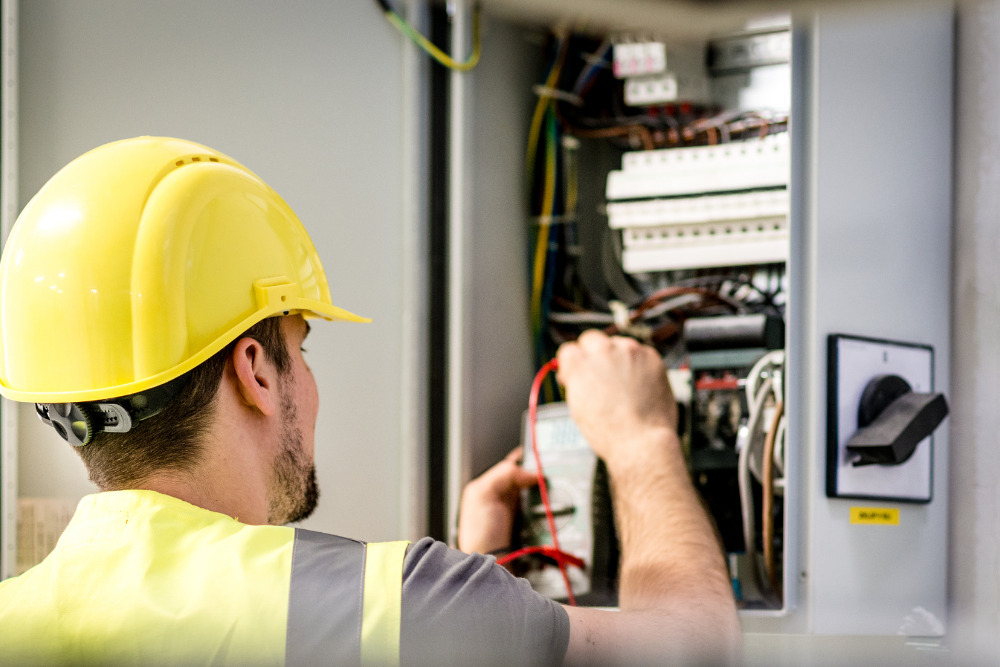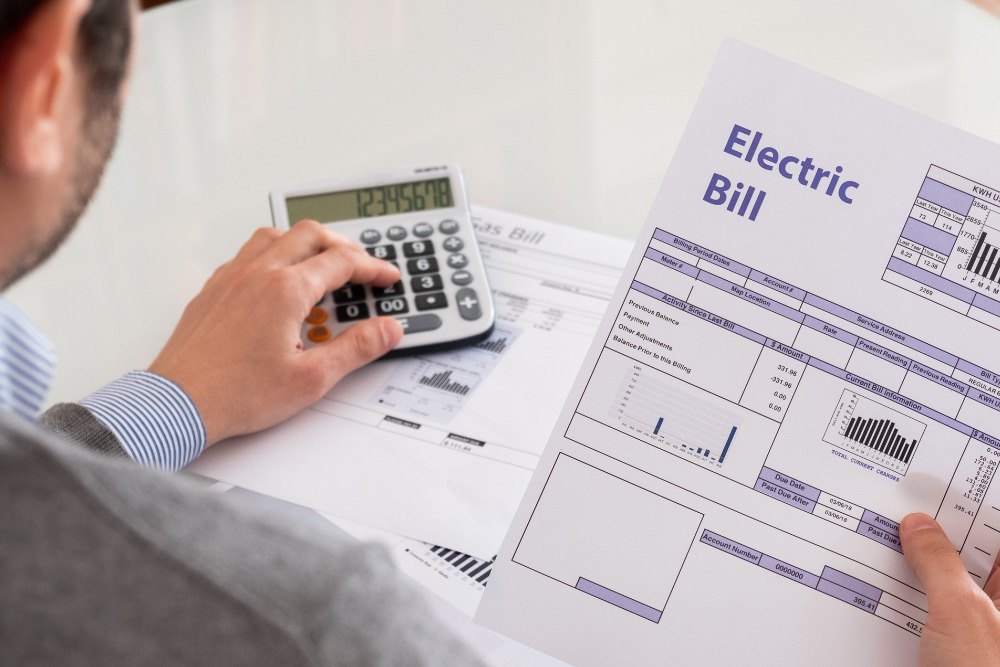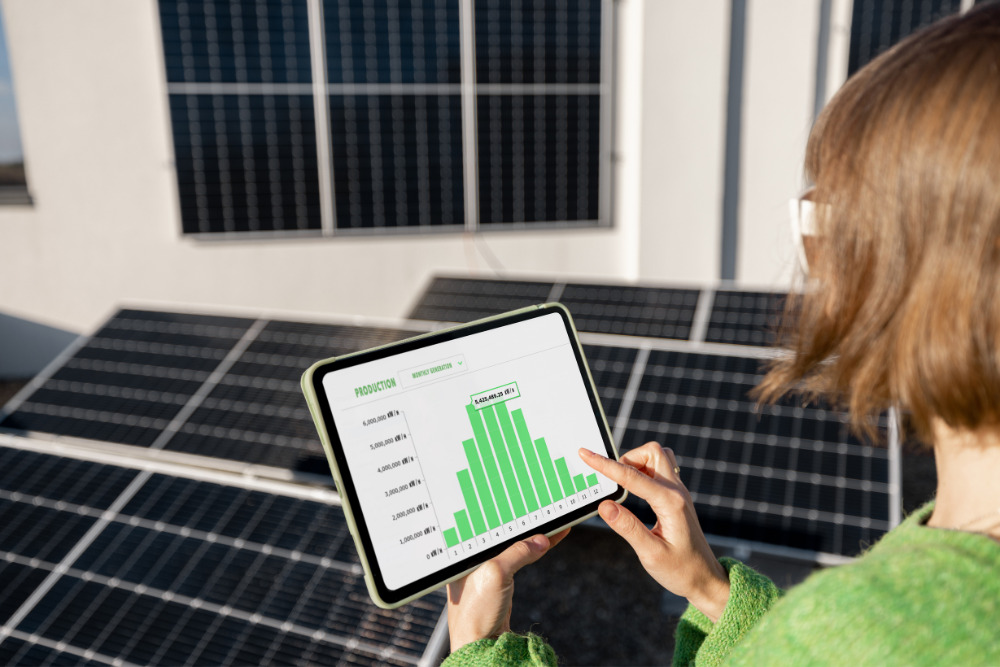
Explore the process of installing solar battery storage and what to expect at each stage. Plus, learn whether it makes more sense to install a solar-plus-storage system upfront or add a battery later.
From initial assessment and system design to equipment installation and commissioning, understanding the solar battery installation process helps homeowners make informed decisions during the move to a renewable energy source.
What Are The Benefits Of A Solar Battery Storage System?
Incorporating a solar battery storage system into your home offers numerous benefits. Most importantly, it provides an off-grid power solution, ensuring you have access to electricity during power outages or blackouts.
By installing batteries alongside your rooftop solar or solar PV system, you can store excess energy generated during the day and use it when needed, which reduces your reliance on the power grid and utility companies.
Moreover, with advancements in battery technology and decreasing battery costs, homeowners have access to more affordable and efficient storage solutions. While batteries are still a significant portion of the cost of a solar power system, with government incentives, tax credits, and rebates, they’re more affordable than ever before.
Steps In The Solar Battery Storage Installation Process
The solar battery storage installation process typically involves an initial site assessment, system design, equipment procurement, installation, and wiring, connection to the solar panels and inverter, testing and commissioning, and finally, system monitoring and maintenance to ensure optimal performance and longevity.
Site Assessment And Energy Audit
Before installing a solar battery storage system, you must conduct a thorough site assessment and energy audit.
The site assessment involves evaluating the physical characteristics of your property, such as roof orientation and available space, to determine the feasibility of solar system installation and battery placement.
Additionally, an energy audit helps assess your current energy usage patterns, identifying areas for potential improvements and estimating the appropriate size and capacity of the battery storage system needed to meet your energy needs.

Permitting
The permitting requirements depend on your location and the specific regulations in place.
The process typically involves submitting permit applications, providing project details, and ensuring compliance with local building codes and safety standards.
Working with a professional installer or consulting your local authorities helps navigate the permitting process smoothly and ensures all necessary approvals are obtained before proceeding with the solar installation.

Electrical Upgrades, If Necessary
Electrical upgrades may be necessary when installing a solar battery storage unit. These upgrades ensure a safe and efficient system and can include modifications to your electrical panel, installation of dedicated circuits, or reinforcement of wiring infrastructure.
An electrical assessment by a qualified professional will identify any required upgrades, ensuring compliance with local electrical codes and the capability to handle the increased power flow from the solar panels and battery storage system.
Mounting And Racking
Solar batteries are typically stored in a designated location within a home, such as a utility room, basement, garage, or outdoor enclosure specifically designed for battery storage.
The exact placement depends on various factors, including available space, environmental conditions, and safety considerations.
Mounting and racking refer to the installation of the battery storage system, which involves securely attaching the batteries and associated equipment to a structure or mounting system. This ensures stability and proper ventilation while allowing easy access for maintenance and monitoring.
Inverter Connection
Connecting the solar battery storage system to the inverter is a critical step in the installation process. The inverter converts the stored energy direct current (DC) electricity into alternating current (AC) for use in your home.
The connection involves wiring the inverter to the solar panels, the battery storage system, and the electrical panel of your home. Professional installers will ensure proper wiring and safe configuration.
Safety Measures
Implementing safety measures is of utmost importance during the solar battery storage installation process. Here are a few key safety considerations:
- Hiring licensed and experienced professionals to install batteries ensures industry best practices and safety standards are followed.
- Proper grounding and circuit protection prevent electrical hazards. Installers should adhere to electrical codes and guidelines so the system is safely connected to your solar panel system and the local electrical grid.
- If the batteries are located indoors, they should be stored in a well-ventilated and fire-resistant enclosure designed for battery storage systems. This helps contain any potential hazards and protects against thermal runaway or other battery-related incidents.
- Place fire extinguishers and smoke detectors around the battery storage area and adhere to fire safety regulations.
- Implement a comprehensive monitoring system to track the performance and health of the energy storage system. This detects any issues promptly, ensuring timely maintenance to minimize safety risks.

System Testing/Inspection
After the installation is complete, a series of tests are performed to verify the functionality of the system. This includes checking the electrical connections, verifying proper communication between components, and testing the charging and discharging capabilities of the batteries.
System performance is evaluated by measuring energy production from the solar panel installation, the storage capacity of the batteries, and the efficiency of the energy conversion processes. This determines whether the system is meeting the expected performance targets.
Monitoring Performance
A monitoring system tracks and displays real-time data about the system's performance. This includes energy production from the solar panels, battery charge levels, energy consumption, and any grid interaction. Real-time monitoring gives you visibility into how your system is functioning at any given moment.
Monitoring systems often include alert functionalities that notify you of any abnormal system behavior or performance issues. This can include low battery levels, system faults, or grid-related events.
How To Choose A Solar Battery Storage System For Your Home
Choosing the right home solar battery storage system for your home requires careful consideration: from evaluating your solar energy needs to assessing system specifications and considering your budget.
System Design And Size
The system design involves assessing energy needs, understanding your consumption patterns, and determining the desired level of energy independence.
Sizing the system appropriately ensures it meets your solar power demands and stores surplus energy generated by your solar panels for later use.
It’s possible to completely cut ties with your electricity provider with an appropriately sized solar-plus-storage system!
Compatibility With Your Current PV System And Inverter
Ensure that the home battery storage system you choose is compatible with your existing solar panels and solar inverter, as they need to work together to optimize energy production and storage.
If you add a storage system later, you may need a separate inverter.
A professional installer will help you determine compatibility and identify any necessary upgrades or modifications to ensure a smooth integration of the battery storage system with your current setup.
Battery Type And Efficiency
Different battery chemistries, such as lithium-ion or lead-acid batteries, offer varying performance characteristics in terms of energy storage capacity, cycle life, and depth of discharge.
You should evaluate the specific needs of your home to select a battery size and type that matches your requirements. For example, if you can switch your high-energy-consumption activities (like running major appliances) to the daytime, you won’t need as much battery backup power for the nighttime.
While more expensive, lithium-ion batteries, such as the Tesla Powerwall or Enphase systems, allows you to maximize your energy usage, take advantage of net metering and time-of-use plans, and potentially qualify for tax credits and rebates.
Cost Effectiveness
While the upfront cost of the system is an important consideration, you should also evaluate the long-term financial benefits. Factors such as the system's capacity, efficiency, warranty, and lifespan should be taken into account to determine the overall value and return on investment.
Additionally, considering factors like potential savings from reduced electricity bills, incentives, and available financing options can help assess the cost-effectiveness of the system over its lifetime.


